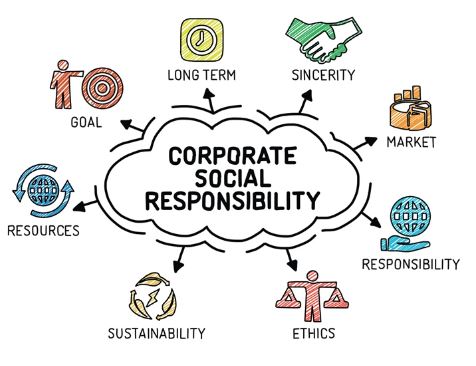Pharma Reps from Product-Centric to Patient-Centric Care: Rise of Outcome-Driven Engagement
1. Beyond Drug Detailing: Educating on Disease Management – Reps now discuss lifestyle modifications, diet, and monitoring alongside medications. – Example: Diabetes reps may provide glucose-tracking tips or connect patients with nutritionists.
2. Digital Tools for Patient Support – Use of AI chatbots, WhatsApp reminders, and telemedicine tie-ups to improve adherence. – Example: Dr. Reddy’s “Sukhibava” app for women’s health.
3. Collaboration with Doctors on Patient Outcomes – Providing real-world data on drug efficacy and side effects to help doctors make informed choices. – Example: Lupin’s “Lyf” initiative for respiratory disease management.
4. Affordability & Access Solutions – Highlighting generic alternatives, patient assistance programs, and tie-ups with govt. schemes (e.g., Ayushman Bharat).
5. Training Reps as “Healthcare Advisors” – Soft skills training in empathy, active listening, and cultural sensitivity (critical in diverse Indian markets).
Challenges in Implementation
– Resistance from Traditional Reps: Older reps used to transactional relationships may struggle with the shift.
– Rural vs. Urban Divide: Digital tools work well in cities but may not reach tier-3 towns effectively.
– Measuring Impact: Unlike sales targets, patient outcomes are harder to quantify in incentives.
Indian pharma’s shift to patient-centricity is a strategic necessity, not just a trend. The future belongs to those who sell solutions, not just pills.
Why the Shift to Patient-Centricity?
1. Changing Healthcare Dynamics – Rising chronic diseases (diabetes, obesity, hypertension) require long-term patient engagement. – Doctors now prefer reps who provide actionable insights rather than just drug features.
2. Digital Empowerment of Patients – Patients are more informed (via Google, health apps) and demand better explanations. – Pharma reps must now address patient concerns (side effects, affordability, lifestyle adjustments).
3. Competitive Market Pressures – With generics dominating, differentiation comes from value-added services (adherence programs, disease education). – Companies like Sun Pharma, Cipla, and Lupin are training reps on patient counseling techniques.
4. Regulatory & Ethical Shifts – Uniform Code of Pharmaceutical Marketing Practices (UCPMP) discourages aggressive sales tactics, pushing for ethical, patient-focused engagement.
1. Beyond Drug Detailing: Educating on Disease Management – Reps now discuss lifestyle modifications, diet, and monitoring alongside medications. – Example: Diabetes reps may provide glucose-tracking tips or connect patients with nutritionists.
2. Digital Tools for Patient Support – Use of AI chatbots, WhatsApp reminders, and telemedicine tie-ups to improve adherence. – Example: Dr. Reddy’s “Sukhibava” app for women’s health.
3. Collaboration with Doctors on Patient Outcomes – Providing real-world data on drug efficacy and side effects to help doctors make informed choices. – Example: Lupin’s “Lyf” initiative for respiratory disease management.
4. Affordability & Access Solutions – Highlighting generic alternatives, patient assistance programs, and tie-ups with govt. schemes (e.g., Ayushman Bharat).
5. Training Reps as “Healthcare Advisors” – Soft skills training in empathy, active listening, and cultural sensitivity (critical in diverse Indian markets).
Challenges in Implementation
– Resistance from Traditional Reps: Older reps used to transactional relationships may struggle with the shift.
– Rural vs. Urban Divide: Digital tools work well in cities but may not reach tier-3 towns effectively.
– Measuring Impact: Unlike sales targets, patient outcomes are harder to quantify in incentives.
Indian pharma’s shift to patient-centricity is a strategic necessity, not just a trend. The future belongs to those who sell solutions, not just pills.
Why the Shift to Patient-Centricity?
1. Changing Healthcare Dynamics – Rising chronic diseases (diabetes, obesity, hypertension) require long-term patient engagement. – Doctors now prefer reps who provide actionable insights rather than just drug features.
2. Digital Empowerment of Patients – Patients are more informed (via Google, health apps) and demand better explanations. – Pharma reps must now address patient concerns (side effects, affordability, lifestyle adjustments).
3. Competitive Market Pressures – With generics dominating, differentiation comes from value-added services (adherence programs, disease education). – Companies like Sun Pharma, Cipla, and Lupin are training reps on patient counseling techniques.
4. Regulatory & Ethical Shifts – Uniform Code of Pharmaceutical Marketing Practices (UCPMP) discourages aggressive sales tactics, pushing for ethical, patient-focused engagement.
1. Beyond Drug Detailing: Educating on Disease Management – Reps now discuss lifestyle modifications, diet, and monitoring alongside medications. – Example: Diabetes reps may provide glucose-tracking tips or connect patients with nutritionists.
2. Digital Tools for Patient Support – Use of AI chatbots, WhatsApp reminders, and telemedicine tie-ups to improve adherence. – Example: Dr. Reddy’s “Sukhibava” app for women’s health.
3. Collaboration with Doctors on Patient Outcomes – Providing real-world data on drug efficacy and side effects to help doctors make informed choices. – Example: Lupin’s “Lyf” initiative for respiratory disease management.
4. Affordability & Access Solutions – Highlighting generic alternatives, patient assistance programs, and tie-ups with govt. schemes (e.g., Ayushman Bharat).
5. Training Reps as “Healthcare Advisors” – Soft skills training in empathy, active listening, and cultural sensitivity (critical in diverse Indian markets).
Challenges in Implementation
– Resistance from Traditional Reps: Older reps used to transactional relationships may struggle with the shift.
– Rural vs. Urban Divide: Digital tools work well in cities but may not reach tier-3 towns effectively.
– Measuring Impact: Unlike sales targets, patient outcomes are harder to quantify in incentives.
Indian pharma’s shift to patient-centricity is a strategic necessity, not just a trend. The future belongs to those who sell solutions, not just pills.











Leave feedback about this